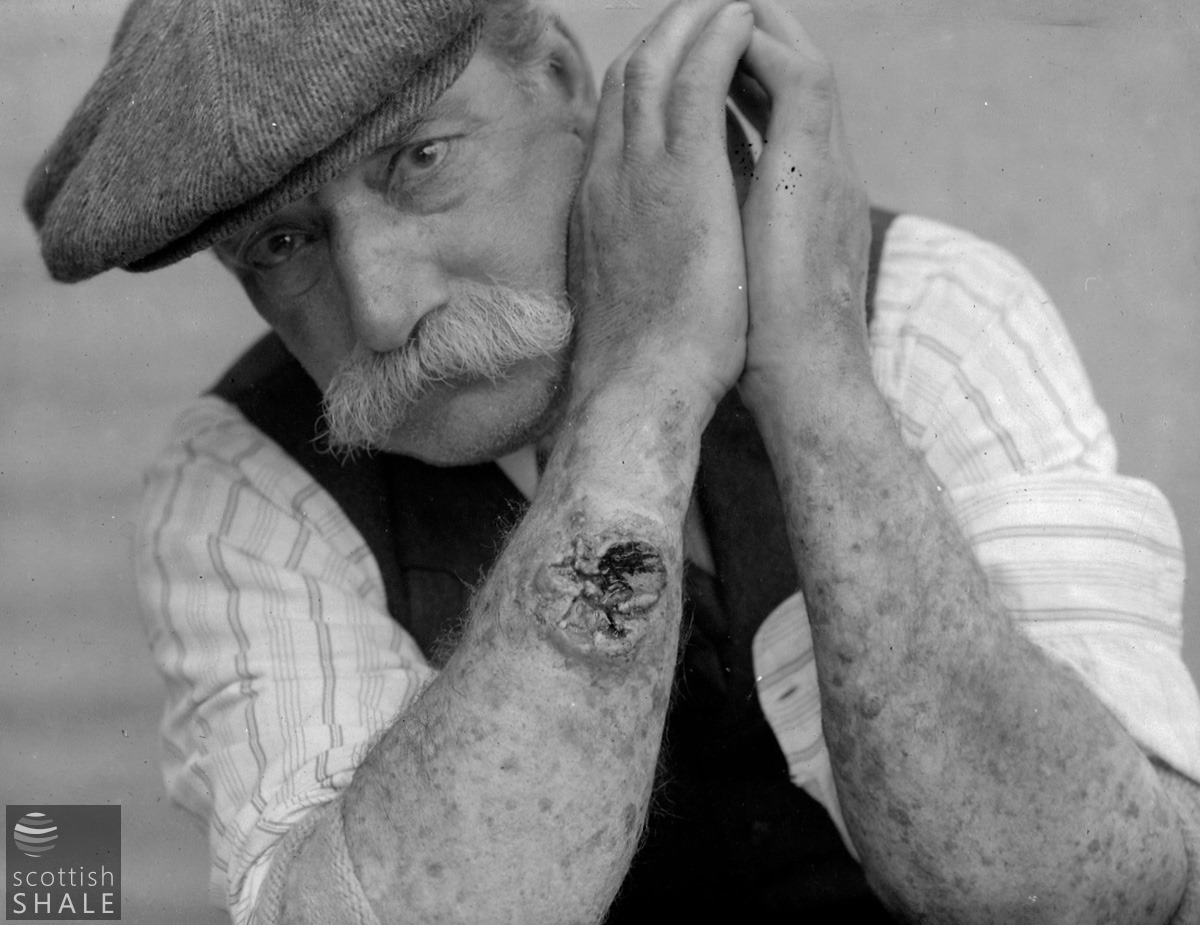Occupational Dermatosis of Paraffin Workers
The Work of Dr. Alexander Scott
P21001 - first published 23rd January 2021
This sad and chilling image is part of a large collection of lantern slides recording the occupational diseases of paraffin workers. They probably illustrate the research of the Broxburn G.P. Dr. Alexander Scott, whose pioneering investigations into the occupational dermatosis of paraffin workers were first published in 1922. Most of the other slides in the series show close-ups of arms, legs and genitals showing terrible warts, growths and ulcers. All stomach-churning stuff, but somehow detached for those actually suffering disease – you seldom ever see a face. The power of this picture is that you are drawn to the eyes of the old oilworker as he shows his pock-marked arms and the cancerous ulcer that may eventually kill him.
Skin conditions were common among oil workers, but were particularly prevalent among those working in the paraffin sheds. Here an oily wax slurry was laid onto canvas filter cloths prior to being loaded into hydraulic wax presses in which the oil was gradually squeezed out. Loading and scraping-off the filter cloths was a filthy job which was impossible to carry out without the arms and lower body of the pressmen becoming saturated with oil and wax. Those starting work in the paraffin shed would suffer from the blackheads and pimples of blocked pores on arms and legs, and after a few years service, warts and papules became more common. Older men with long service in the sheds were at risk of epithelioma – the paraffin workers cancer. These growths and ulcers occurred on arms and legs, sometimes on the face, but most frequently on the scrotum.
Alexander Scott's work brought the horrors of paraffin cancer to the public eye, led to changes in working practice, and promoted the construction of works baths.

